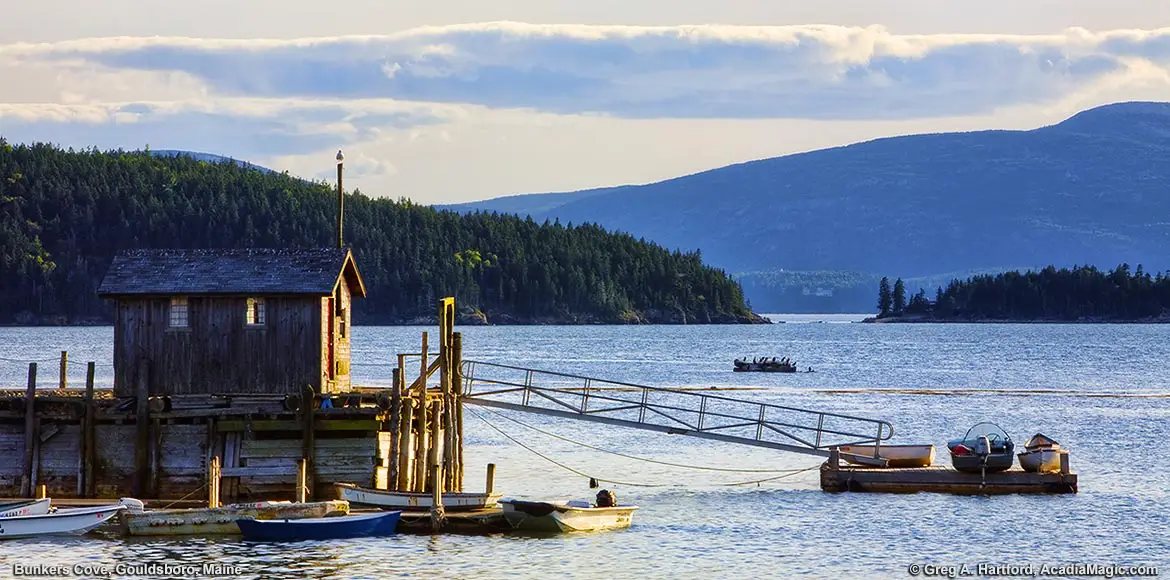Gouldsboro, Maine was first settled in the area now known as West Gouldsboro, which became the town's initial village. In 1764, the General Court of the Commonwealth of Massachusetts granted land, then part the County of Lincoln, to Colonel Nathan Jones, Francis Shaw, and Robert Gould. The area, named after Robert Gould, was initially called Gouldsboro Plantation.
In the aftermath of the Revolutionary War, efforts were made to settle the eastern parts of what was then Massachusetts (now Maine) to boost the state's finances. Known for its rich natural resources, this remote eastern region drew interest. To encourage settlement, Massachusetts launched a lottery in 1786, aiming to attract individuals and businesses to these areas, known as the Kennebec tract (a significant portion of present-day Somerset County) and the Penobscot tract (today's Hancock and Washington Counties), each spanning about 1 million acres.
Gouldsboro was officially incorporated on February 16, 1789, and later that year, on June 25, the county name was changed to Hancock County. Notably, the 1790 census of Gouldsboro listed Thomas Frazer, an African-American and the first non-Indigenous settler in the area, as operating a saltworks company. This company supplied salt to passing ships at what is now called Frazer Point in his honor.
When the land lottery did not yield the desired results, Massachusetts attempted to sell entire townships to its affluent citizens, but this effort also fell short. Land speculation took shape in 1791 when Henry Knox and William Duer acquired both tracts for about 10 cents per acre. Their strategy was to appeal to French noblemen who stood to lose significant wealth amid the French Revolution. Unfortunately, the venture failed due to bankruptcy and their primary intended buyer never arriving to complete the purchase.
Around 1793, a wealthy Philadelphian named William Bingham revitalized the development of these tracts by negotiating the purchase of claims on most of the land. He then sought to attract European buyers. To safeguard his investment, he hired the esteemed General David Cobb of Massachusetts in 1795 to relocate and serve as his on-site agent. General Cobb was a former aide to General George Washington, a Speaker of the House, and a distinguished doctor, among other accomplishments.
General Cobb believed that the key to the region's successful development lay in its soil. He promoted it as an excellent area for agriculture to potential settlers and investors. Meanwhile, Mr. Bingham continued acquiring more coastal property in what are now known as Gouldsboro, Trenton, Ellsworth, and Mount Desert.
In 1799, an Englishman named John Black became General Cobb's clerk. His talents quickly earned him a reputation, and by 1802, he married Mary Cobb, the General's daughter. After the death of a sub-agent for Ellsworth in 1805, Colonel John Black was appointed to take over the position.
Colonel John Black held a different view regarding the surrounding land's value compared to General Cobb. He believed its real potential was not in agriculture but in the lumber trade. This difference in perspective, coupled with Black's exceptional management skills, likely allowed him to surpass General Cobb and eventually become the general agent for Bingham's properties, which later became part of Maine.
Gouldsboro, Maine, now encompasses areas from the western sections of Frenchman Bay, including Long Porcupine Island, Sheep Porcupine Island, and Bald Porcupine Island, extending to the western shore of the peninsula and across to the eastern shore of the central section of Gouldsboro Bay. Portions of land that were once part of Gouldsboro were annexed and incorporated as Winter Harbor in 1895.
Gouldsboro, Maine now covers the majority of the area from western sections of Frenchman Bay that includes Long Porcupine Island, Sheep Porcupine Island, Bald Porcupine Island, the western shore of the peninsula across to the eastern shore to the central section of Gouldsboro Bay. Parcels of land that were once part of Gouldsboro were annexed and became incorporated as Winter Harbor in 1895.
According to the United States Census Bureau, Gouldsboro, Maine, covers a total area of 100.8 square miles (261 sq. km), of which 45.7% or 46.1 square miles (119.4 sq. km) is land and 54.3% or 54.7 square miles (141.6 sq. km) is water.
Schoodic Region Vacation Rentals, Lodging, etc.
Gouldsboro Municipal Business:
Town Manager
59 Main Street
Prospect Harbor, ME 04669
(207) 963-5589
Dorcas Library (207) 963-4027
28 Main Street
Prospect Harbor, ME 04669-0167
